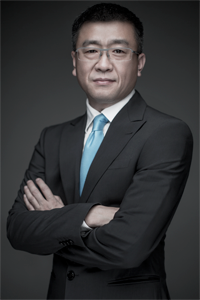Editorial by Wan Jie, President and Founder of Artron Art Group

Wan Jie
President of Artron Art Group,
Founder of Artron.Net and
AMMA and Vice President
of the Forbidden City College
In March 2017, Art Market Monitor of Artron (AMMA) and Artprice jointly published their annual report – The Art Market in 2016. The report is a culmination of extensive research on the global art market undertaken by both parties. Forming its foundation, the report has been built around big data obtained from market transactions. This has been paired with comprehensive and advanced research methods to present readers worldwide with both a general picture of the current global art market as well as an outlook on its prospects for development.
In 2016, the global economic situation remained gloomy and the art market continued to decline. The annual turnover for Fine Art auctions was $12.45 billion (including buyer’s premium), down 23% from 2015. Chinese Fine Art auctions totalled $4.79 billion with China leaping into first place with a +8% progression and holding 38% of market shares. Falling to rank second worldwide, America dropped to 28% in market shares whilst England held 17% of market shares. As before, the Chinese and Western art markets appeared to be experiencing a period of slow growth.
Chinese auction houses were tentatively testing the waters with Western artworks, founding a new category. In recent years, prominent Chinese collectors have spared no expense in purchasing classical works by Western masters auctioned at well-known international auction houses. Collectors have been pursuing more internationally-driven objectives for art collection. Chinese auction houses have responded by progressively testing the waters with Western artworks. The sale “Autumn Auction Modern and Contemporary Western Master Paintings” held by Xiling Yinshe Auctions in 2015 ignited the Chinese system of collecting Western Art. Since then, auctions have been achieving great success with high turnover rates and notable popularity – such as the 2016 Poly Auctions Shanghai sale “Dialogue: From Yuan Dynasty People Hunting in the Fall to Picasso – Important Eastern and Western Art” – illustrating that Western artworks have brought the Chinese secondary markets a wave of ‘fresh blood’ and potential.
Aesthetic preferences of Chinese art collectors shifted – a trend for the collection of Western artworks. Western masters such as Monet, Van Gogh and other representatives of Impressionism, as well as Picasso, Rembrandt, Bacon, Morandi and others have long been amongst the list of artists coveted by prominent Chinese art collectors. These collectors are increasingly present within the primary market making purchases at international and well-known art expositions and gallery exhibitions. Similarly, within the secondary market many Chinese art collectors are undertaking a transition from turning personal collections into corporate collections. To highlight a few, Wang Jianlin’s purchase of Monet’s Bassin aux nymphéas, les rosiers auctioned by Sotheby’s New York for $20.41 million; the Christie’s New York sale of Nu Couché by Modigliani to Liu Yiqian for $170 million; and the acquisition of Van Gogh’s Still Life, Vase with Daisies and Poppies for $61.77 million by Wang Zhongjun at Sotheby’s New York.
Art is merging with daily life; art consumerism is increasingly becoming the norm. The composition of the Chinese art market and its requirements is currently undergoing a profound change. Art consumerism, art collection and art investment will become a three-of-a-kind and, with the slump of the latter two, from now until the foreseeable future, art consumerism might well support the Chinese art market’s impending transformation and structure. Consequently, former views attaching importance to art collection markets or investment markets will change, enabling the Chinese art market to possess an extensive degree of involvement in the mass market. The main body of art consumers today are unlike traditional collectors: they are a younger generation, many have studied abroad, and their horizons are more expansive and international. It is quite likely that this group will change the structure and future of the Chinese art market.
In 2016 the global art market, in spite of the ups and downs in recent years, continued nonetheless to slowly develop amidst complicated economic circumstances. On behalf of art lovers, art collectors and art investors worldwide, Artron.net and Artprice have fully prepared themselves to continue to penetrate marketplace frontiers, seize the pulse of the art consumerist market, impart the culture of art for future generations to come, promote its value and support art so that it may enter into the lives of each and every individual.






 30.6
30.6
